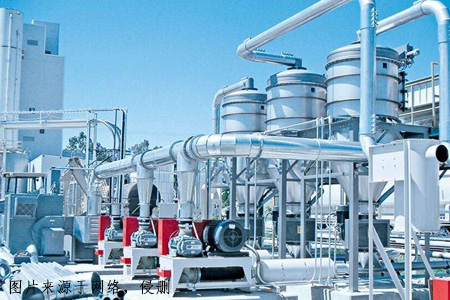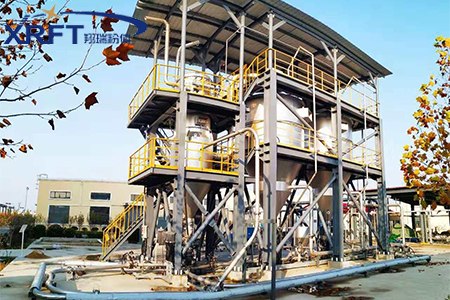In the chemical, pharmaceutical, cement, plastic, battery and other production industries, the raw materials or products often appear as solid bulk powder. The fluctuation of process parameters in the production process often leads to the fluctuation of product performance index. In order to maintain the stability of the physical properties of the product, the powder and granular materials produced in different batches and at different times need to be mixed and homogenized.

1、 Classification of blending homogenization
The mixing and homogenization process of bulk materials requires the movement of materials, so it is a physical process of energy consumption. According to the different ways of adding energy, it can be divided into mechanical, pneumatic and gravity mixing homogenization ways.
The mechanical mixing method uses machinery to promote the mutual movement between the powders, so as to mix different powders to achieve the purpose of blending homogenization. For example, mixer, mixer, drum mixer, etc., its point is small capacity, large wear, intermittent operation, suitable for small-scale production.
Pneumatic blending homogenization uses the energy of compressed air to make the powder present fluidization state, so as to achieve the purpose of blending homogenization. It is characterized by large treatment capacity, high energy consumption, large terminal gas-solid separation device, and secondary particle segregation.
The gravity mixing homogenization method is to insert many mixing pipes into the storage equipment, open holes at different positions of the mixing pipe, and use the gravity of the powder as the driving force to flow the materials with different material level from the opening of the homogenization pipe and gather them at the bottom of the silo, so as to homogenize the powder.
2、 Classification of gravity mixing silo
Gravity mixing silo can be divided into central cone type, single tube type and multi tube type according to the layout type of internal mixing homogenizing pipe.
There is a conical component in the central cone blending homogenization silo, which uses the velocity gradient produced by the powder in the vertical direction, that is, the different falling velocity of the powder in the center of the discharge port to change the cutting velocity of the material layer at the same height to achieve the homogenization effect.
There is a homogenizing tube with holes of different heights in the center of the single tube blending homogenizing silo, and its height diameter ratio is larger than that of the funnel blending homogenizing silo. The powder of different heights in the silo enters the homogenizing tube from the feeding holes of different heights in the central homogenizing tube, and converges at the bottom of the blending homogenizing silo to achieve the homogenization purpose.
The structure of multi tube blending homogenizing silo is similar to that of single homogenizing silo, which adopts multi homogenizing tubes for blanking. According to the different position of pipes, it can be divided into mixing tree type and wall sticking tube type. Each homogenizing tube is provided with multiple reclaiming holes at different heights, which increases the number of reclaiming holes in the silo, improves the axial and radial distribution of reclaiming holes in the blending homogenizing silo, and significantly improves the homogenizing effect of the blending homogenizing silo. It is better than the central tube and the central cone mixing silo.

Nanjing Xiangrui Powder Engineering Co., Ltd. is a professional company dealing with solid bulk granular materials. It can provide users with a wide range of bulk material treatment equipment and systems, including pneumatic conveying, blending homogenization, weighing and metering, unpacking and bag opening, dust collection and other systems. The company will customize the most suitable bulk material treatment system according to your needs.